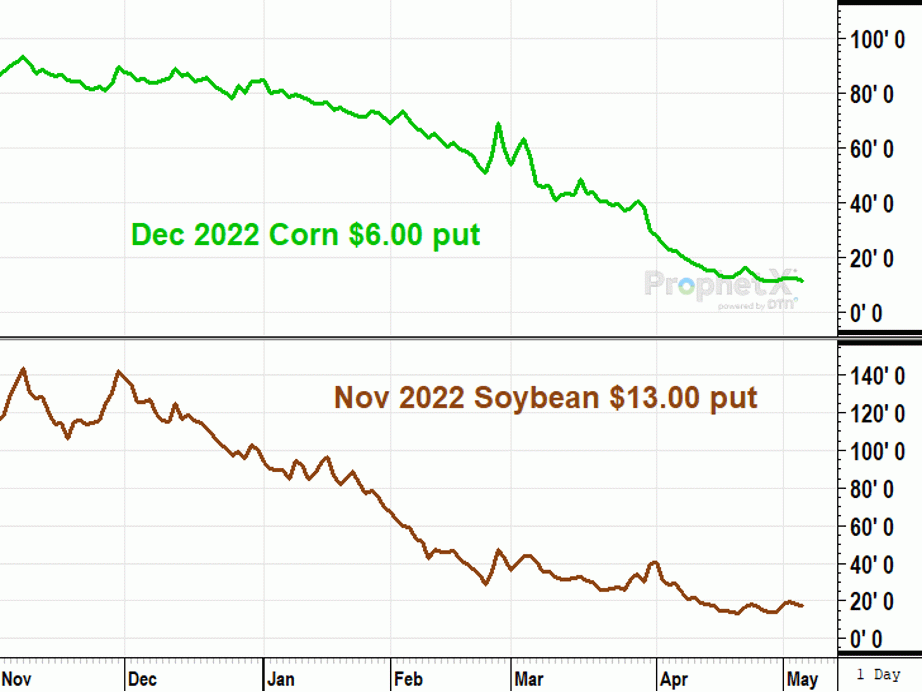Todd's Take
US Grain Prices Encounter New Season of Risk
As I sit down to type this column on Cinco de Mayo, I have to say, it doesn't feel like May. The skies are gray and the air is chilly. One-third of the corn crop is usually planted by now, but most the fields I pass in southeastern South Dakota are untouched. According to USDA, planting progress in Iowa and Illinois, the top corn and soybean growing states, is still in the single digits, far below their five-year averages of 42% and 43%, respectively, for this time of year.
April was extremely turbulent in the Western Corn Belt this year, blowing strong winds that wouldn't stop, sending blizzards across Montana and North Dakota, stirring up enough dust to bring back talk of the 1930s and fueling wildfires from Nebraska to New Mexico. Weather in the northern corn states remained too cold for planting and those states are still waiting for the temperatures to rise. Monday's report from USDA showed North Dakota and Minnesota haven't accomplished enough planting yet to register any progress.
Next week's forecast looks warmer with highs in the 80s from Nebraska to Ohio, even reaching southern Minnesota for at least a day. There are chances for rain in the northwestern Corn Belt next week, but for the most part, we should start to see more planters out soon.
Not only is this the time of year when temperatures start to rise, starting the traditional ritual of getting crops in the ground, this is also the time crop prices tend awaken from winter dormancy.
May is the traditional month when increased interest in new crops and rising temperatures tends to translate to more price movement among grains and oilseeds. Every year is different, but there is nothing like the prospects of a hot and dry forecast in early summer to spark excitement in corn and soybean prices, or timely rains to dowse those bullish hopes.
So far, 2022 has not fit the mold of a normal seasonal pattern. A rare drought in South America and Russia's assault on Ukraine robbed crop prices of any semblance of quiet trading over the winter. As of Thursday's close, May 5, July corn has already tacked on over $2.00, year-to-date. Over the same period, July soybeans are up $2.92. Price volatility can go either direction, but it seems a stretch the next four months could have more price movement than we've already seen.
As we've discussed before, this is not the year to rule out unlikely scenarios. On April 22, I discussed this year's bullish factors (see https://www.dtnpf.com/…). The one that continues to stand out as potentially most troubling is the unpredictability of Russia's President Vladimir Putin. Putin, either by himself or in conjunction with a possible U.S. drought, is one source of possible combustion for this summer's grain prices that could make the past four months look tame by comparison.
P[L1] D[0x0] M[300x250] OOP[F] ADUNIT[] T[]
On the other hand, if crazy Vlad had a change of heart and backed off his deadly charade, markets could calm down dramatically.
So, what's a producer to do in this potentially volatile situation?
First of all, this is not the year to be short in the futures market unless you have solid commitment from your banker and call options to cap possible margin calls.
Tread lightly on making any new-crop cash sales commitments. Personally, I would not take the bait of making sales beyond 2022. Elaine Kub had a good discussion about those choices here https://www.dtnpf.com/….
Be familiar with your crop insurance protection and study the options choices for December corn and November soybeans. Consider having limit orders in the market to raise your level of price protection.
For example, 85% protection on this year's crop insurance provides price protection of roughly $5.00 per bushel for corn and a little more than $12.00 for soybeans, assuming average yields.
On May 5, December 2022 corn closed at $7.38 1/2 and a December $6.00 corn put traded between 11 3/4 cents and 12 3/8 cents. November 2022 soybeans ended at $14.91 3/4 and a November $13.00 put traded between roughly 16 and 18 cents. Purchasing either or both options at a price of your choosing would enhance the price protection you have for your crops above the levels you probably already have with crop insurance. The puts would also allow you the flexibility of being able to sell the positions whenever you want, as long as you do so before expiration.
I will also point out there is a good chance the put options mentioned will expire worthless, and if you don't suffer adverse weather, your crop insurance may not pay off either.
At this point, I don't necessarily believe crop prices will fall dramatically in 2022, but the decision is not about predicting the markets. It is about trying to protect your farm finances in a highly uncertain and potentially volatile year.
For 33 years, I've owned homeowners insurance and, except for one roof replacement, I don't recall ever having received a check back. I don't regret the premiums lost and consider myself happily lucky to have never lost a home to tornado or fire. To me, the decision to consider the put option choices above are no different.
Best wishes as we begin what is often a volatile season for grain prices.
**
Comments above are for educational purposes only and are not meant as specific trade recommendations. The buying and selling of grain or grain futures or options involve substantial risk and are not suitable for everyone.
Todd Hultman can be reached at Todd.Hultman@dtn.com
Follow him on Twitter @ToddHultman1
(c) Copyright 2022 DTN, LLC. All rights reserved.




